Adult Ventilation Techniques
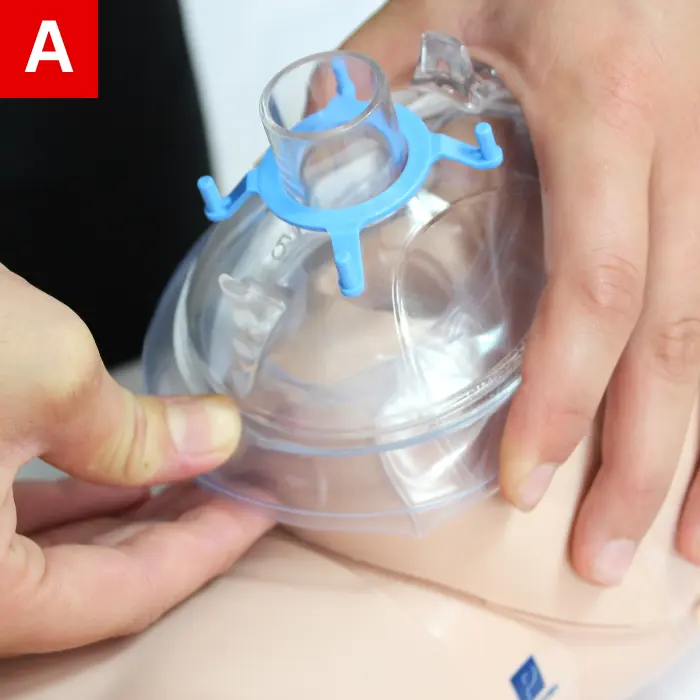
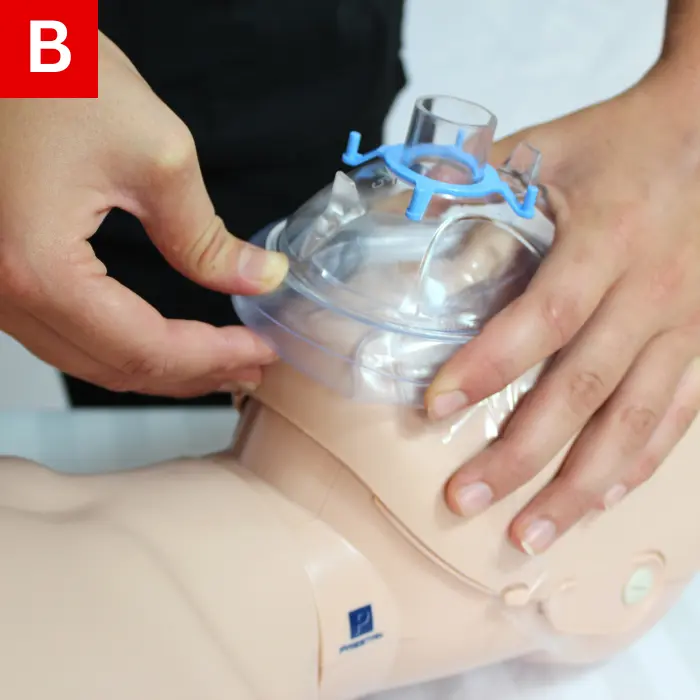
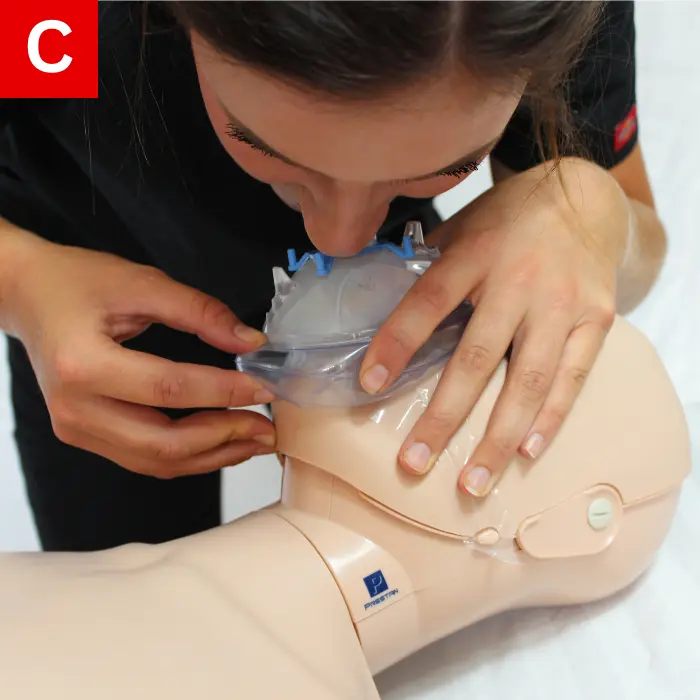
Figure 5
Adult Mouth-to-Mask Ventilation
Breaths should be given with a pocket mask whenever available in one-rescuer CPR.
- Deliver 30 high-quality chest compressions.
- To secure the mask on the patient’s face, place four fingers of one hand along the mask’s top, with the other hand’s thumb on the bottom edge (Figure 5a).
- Use the head-tilt/chin-lift maneuver to open the airway, but do not attempt this if the patient is suspected to have a neck injury. If a cervical injury is suspected, consider alternative methods (Figure 5b).
- Press the edges of the mask with strength and deliver a breath that lasts more than one second while observing the rise in the patient’s chest (Figure 5c).
- If there is disinterest in providing ventilation (because of an airborne illness suspicion),
hands-only CPR would be an equivalent option.
Adult Bag-Mask Ventilation in Two-Rescuer CPR
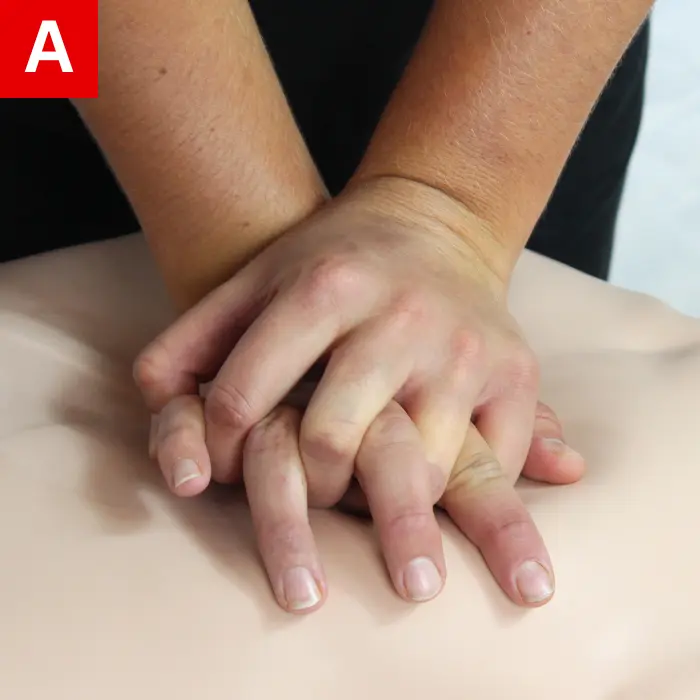

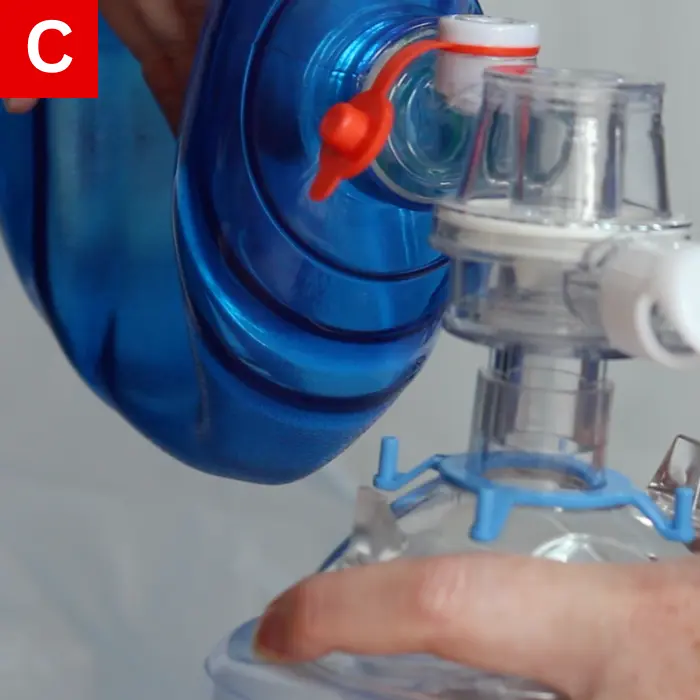
Figure 6
When the bag-mask device is available and two people are around, the second rescuer must be at the patient’s head while the first rescuer delivers high-quality chest compressions.
- Count out loud while delivering the chest compressions to avoid losing count (Figure 6a).
- The first rescuer should open the airway by raising the patient’s lower jaw, while the second rescuer secures the bag-mask by using his or her index finger and thumb and shaping it in a “C” on a single side of the mask to properly seal the mask and the face (Figure 6b).
- The second rescuer then gives two breaths; each breath must last more than one second as you watch the person’s chest rise (Figure 6c).
- The bag valve mask is crucial in creating a tight seal; practice this technique.
